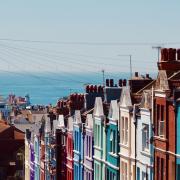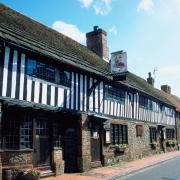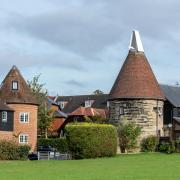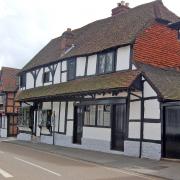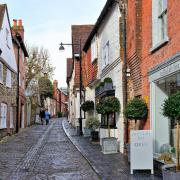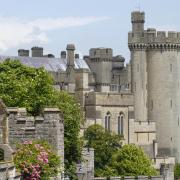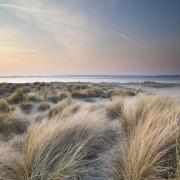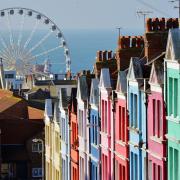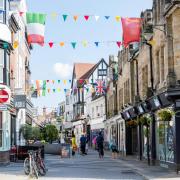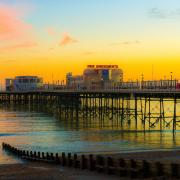Brighton Museum’s archives capture an ever-changing vision for the Royal Pavilion. Curator Alexandra Loske takes Duncan Hall on a tour

Ever since John Nash transformed the Prince Regent’s Palladian seaside home into an Oriental-themed palace it has been intrinsically linked to Brighton.
But now a new exhibition shows how different the Royal Pavilion could have been, as well as the work which continued on the building after Prinny’s death. Curator Dr Alexandra Loske was inspired to put together Visions of the Royal Pavilion Estate as she sorted through an extensive series of 200 designs commissioned from Joseph Henry Good by George’s brother King William IV in the 1830s.
“People knew these plans existed,” she says of her initial project. “They were photographed in the 1980s and 1990s and put on microfiche, but we felt it was high time they were digitised and properly made available to the public. They will eventually be made accessible online.” Looking at just a handful of designs, which were commissioned as part of a survey of the estate, it is astonishing to see the amount of detail they went into, and also some of the elements which were either never carried out or have since been demolished. Here is evidence that there were plans to add colourful designs to the North Gate – creating a Moorish element with blue and white checks. Elsewhere is the design for the South Gate and accompanying servants’ quarters – both since demolished. Pinpricks in the original paper documents suggest they were copied, following methods which existed before the photocopier, to be passed on and used by other people.
Some of Good’s designs have been created by volunteer Colin Jones as 3D computer models – including a water tower and the aforementioned servants’ quarters. “We aren’t showing the Nash views in the exhibition,” says Alexandra. “We wanted to show the quirky ones and unsolved mysteries surrounding the Pavilion.”
In among the Good designs stored in the archive she found older designs by Henry Holland – who transformed George’s former farmhouse into the Palladian so-called Marine Pavilion in 1787 – and drawings by William Porden from 1808 who designed the neighbouring Dome, which was originally stables and is now a popular concert venue.

There is also a series of visions of how the Royal Pavilion might have been, responding to Prince George’s interest in Chinese style. Prior to Nash’s final successful designs from 1815 was an even grander scheme commissioned from Humphry Repton in 1805. His designs for the main building are so close to the final Royal Pavilion that Nash must have been given copies. In his vision the grounds have a pool in the centre with a stage for an orchestra, an orangery, aviary, hot houses and are bounded by a series of glass corridors which could be opened up in the summer leaving wooden or cast iron frames for trail climbers and creeping plants to inhabit.
So legend has it, Prince George’s long-term mistress Mrs Fitzherbert scuppered Repton’s plans. “According to Repton she said: ‘Pray, what is all this to cost?’” says Alexandra. “That was the end of it. He was creating them at the wrong time – the Napoleonic wars were going on. It was just too ambitious and expensive – George couldn’t be seen to do more after the huge extravagance he had spent with creating the Dome, especially in a time of crisis.”
Both Nash and Repton had worked together before – and Repton’s plans entered the public domain when he published them in a version of one of his famous Red Books, which usually only went to his clients. As well as beautiful coloured designs of the Pavilion, it has before and after flaps to show how his new designs would look. Brighton Museums has four copies of the book in its archives, including two first editions, one of which Alexandra discovered belonged to Amon Henry Wilds, the architect behind most of Brighton’s unique seafront design. “Wilds built himself a little miniature Royal Pavilion, known as the Western Pavilion, as his own house,” says Alexandra. “He had a copy of Nash’s views, and now we know he definitely had a copy of Repton’s designs too in his collection. Sometimes these things become more meaningful over time. It’s the really nice thing about working in archives – things resurface which were once thought lost.” A copy of the Royal Pavilion Red Book has now been digitised and can be found on the Royal Pavilion’s website as a pdf file.
Another unexpected discovery was plans and a painting of an amphitheatre within the Royal Pavilion’s grounds. “No designer is attached to the designs,” says Alexandra. “It could simply be a good idea that somebody had at the council – an aspiration for the space.” The design suggests 1,024 people would have been seated in the theatre. It is accompanied by a painting from the 1920s or 1930s envisioning how it might have looked, but there is no evidence it was ever built, unless a city resident knows different.
One element of the Royal Pavilion which definitely did exist is the South Gate – albeit in several different incarnations. The location is now the India Gate – unveiled in 1921 to mark the role the Royal Pavilion played in caring for wounded Indian soldiers during World War I. “We have 19th century versions of the South Gate which we are showing in the exhibition,” says Alexandra. “One, which is contemporary with the Good plans, has been described as looking like a prison or a fortress. It was pulled down by the council when the Royal Pavilion was bought in the 1850s or 1860s. It was replaced by a more open structure of two little guard houses, which can be seen in postcards from the late Victorian and Edwardian period. It was very municipal and formal.” A municipal redesign is captured in 1892 designs by Francis May, complete with room for official noticeboards. This was the gate eventually replaced by the India Gate.
In the exhibition Alexandra has tried to create a timeline of the estate’s exteriors and place in Brighton over time using paintings and postcards throughout its history. She has also included elements from popular culture, such as the Pavilion’s use as a backdrop for Malcolm Saville’s 1954 adventure story The Long Passage, complete with pen and ink images of the tunnel under the grounds between the Pavilion and Dome. Further examples come from Georgette Heyer’s historical romance Regency Buck, and by Raymond Briggs, whose Snowman flies over the palace in the original book.
“We want to show it all the way up to the present,” she says, adding they are hoping to get an image by Children’s Laureate Chris Riddell, as featured on the front of the comic collection Brighton’s Graphic War, to bring the exhibition into the 21st century. “There are so few examples where a royal palace is so much part of urban life – and has been for a long time.”
Visions of the Royal Pavilion Estate is in the Prints and Drawings Gallery at Brighton Museum and Art Gallery from Tuesday 14 March to Sunday 3 September. Open Tuesday to Sunday and bank holidays 10am to 5pm. Entry is free for Brighton and Hove residents, otherwise £5.20/£3. Family tickets from £8.20.
For more information call 03000 290900; brightonmuseums.org.uk




